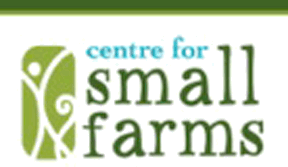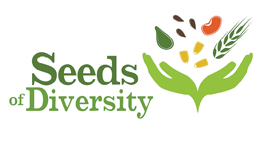Workshop report
June 2017
A Summary of Findings
Download the Workshop Report .pdf (1.98 MB)
The Social Economy of Food: Informal, under-recognized contributions to Community prosperity and resilience is a major, SSHRC-funded project that explores variations on food initiatives and projects that operate within the social or informal economy—to understand the role of these activities in food security, environmental stewardship and community development, and to identify how they can benefit marginalized communities, including low-income groups, Aboriginal people, youth and women.
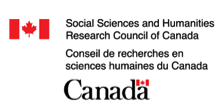 This workshop and report was made possible through generous funding from the Social Sciences and Humanities Research Council of Canada.
This workshop and report was made possible through generous funding from the Social Sciences and Humanities Research Council of Canada.
For further information please contact Irena Knezevic (IrenaKnezevic@cunet.carleton.ca)
Suggested citation:
Nourishing Communities. 2017. Subversions from the informal and social economy: a workshop report. Centre for Sustainable Food Systems, Wilfrid Laurier University.
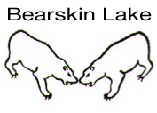


Introduction
On March 24, 2017 the Nourishing Communities Research Group hosted a one-day workshop in Ottawa on the campus of the University of St. Paul. The event brought together researchers and community partners who were involved in the first two years of the project, working in diverse communities from Atlantic Canada to the Northwest Territories.
This community-based research project investigates food initiatives that operate within the social or informal economy, intended to address food security and community development; benefit marginalized communities, including low-income groups, Aboriginal people, youth and women; and provide important environmental stewardship services. At the midway point in the project, the group decided to undertake an assessment and evaluation of results and devise next steps.
The most significant shared need identified by the case studies of community-based initiatives was a method of identifying and communicating the diverse range of benefits and often-unacknowledged value that they generated and nurtured. This is a common problem for those working with social purpose and informal initiatives. As a result, the research group decided that the next step would bring together researchers and community partners to think about evaluation, indicators, and metrics—ways of measuring and reporting that are useful and relevant for social and informal economy projects. These indicators would help researchers do comparative work while identifying commonalities and gaps, and help everyone to communicate outcomes in a way that would be intuitive to those without food systems background; useful to other social and informal food initiatives; and useful to influence policy-makers and funders.
(Recorded webinars can be accessed at http://nourishingontario.ca/the-social-economy-of-food/webinars-subversions-from-the-informal-and-social-economy/
In early 2017 the researchers and community partners presented initial reflections and case studies from regions across Canada in three 90-minute webinars. Participants were asked to identify ways in which these diverse initiatives prioritized regeneration, revitalization and reconciliation; offered an alternative practice that challenges accepted values; enhanced collaboration to maximize collective impact; or worked toward the collective provision of basic needs.
The webinars provided the background for a face-to-face workshop of the project principals including community partners, student researchers, and the research team—30 in all. This reflects a project focus that prioritized healthy academic-community partnerships. Community partners are supported and involved where possible, reflecting some of what’s happening in community projects in general: bringing diverse voices to the table; dialogue across difference; valuing the messiness of building relationships; or valuing people’s time and resources (e.g. by covering expenses or sharing non-monetary resources, such as credibility/expertise/connections).
The Workshop
The goals of the workshop included encouraging participants to learn and share ideas and models to measure the social, economic, and other impacts of these initiatives; to draft a menu of measurements for impact of these initiatives; and to develop some ideas to strengthen and increase the social impact of the projects. The workshop was facilitated by Sally Miller, who has decades of experience in cooperative food enterprises and has worked on the development of indicators for social economy projects.

The first step involved an extended discussion of indicators. Drawing on the case studies presented in the webinars, the group discussed the differences and overlaps between social and other impacts, as well as innovation and system change questions about scale, replicability, and extent of impact of social economy initiatives. The facilitator presented possibilities and models for alternative metrics that have been used to measure social impact, and the group discussed the assumptions of each indicator, what it was valuing, and what they liked and disliked about each
Using the discussion and observations from this initial review, and an over-view of the ‘gift economy’, the group developed potential indicators for their initiatives using an ‘iceberg’ exercise to identify paid and unpaid labour in their initiative, and define how each could be measured.
In smaller groups, they attempted to devise measures that could capture the social impact of these activities, and finished with reflections on next steps for the project.
Workshop Results
The following is a collection of the thoughts, discussions, speculations and reflections that came from the various exercises that filled the day. Where necessary, these have been grouped to capture shared meaning and cross-fertilization of ideas.
Volunteers
One common observation uncovered by the ‘iceberg exercise was the staggering amount of volunteer labour that 
went into the success of every initiative, quite often including core functions. The volunteer hours of key personnel also often included training and supervision of volunteers, knowledge sharing, networking, event planning, grant writing, mentoring and advocacy.
Our Thinking on Indicators
Many made the observation that their activities covered aspects and motivations that were inherently difficult to measure, including:
- Horizontal diffusion of knowledge, respect for the traditional and local
- Sharing food—most often a visceral exercise
- Reclaiming
- Community
- Unpaid labour
- Social capital
What made measurement so difficult?
- We’re measuring things that are external from the formal system
- Things that involve $$ have so many other ways of being ‘counted’
- One’s subjectivity changes when thinking alternatively
- We’re attempting to measure aspects that are multi-dimensional
(as opposed to the market, which is relatively uni-dimensional) - Our initiatives relate to the market economy in multiple, different ways—and the relationship to $$ is all over the map—and therefore challenging to measure
- We use a systems approach that involves measuring complexity, including longevity, resilience, transformation and sustainability
What do alternative indicators need to capture?
 Potential for ‘scaling up’ – figuring out how to make the functional viable on a larger scale
Potential for ‘scaling up’ – figuring out how to make the functional viable on a larger scale- A vision of social change that is collective and transformative, but based on common-sense
- Making visible work that is already ongoing
- Champions involved in building social capital
- Definitely place-based
- Demonstrating that adaptation, alternative is possible
- To what extent is this ‘women’s work’? What is the relationship to the market economy, and what is valued?
- Is ‘entrepreneurial spirit’ part of the ‘mainstream economy’?
- A measure of value beyond $$, even for market actors whose viability is determined by $$ in that space
- Value that is contextual; value of a relationship; value to community
Recommended Indicators
Not all indicators are created equal. Indicators serve different purposes, and the inappropriate application of an indicator to activities or initiatives will not capture their intent, or measure the fullness of their success in meeting goals (e.g. $ figures to measure gifting and barter). At the same time, participants identified that indicators themselves can have different intents.
If, for example, people’s perception of the program, or media exposure is seen as the most important outcome, it was suggested that we need to re-think how we approach, document and communicate indicators, to convey why others would recommend our initiatives. For these purposes, some alternative approaches included:
- Stories that describe impact
- Stories of transformation
- Film/ video/ audio
- Feeling pictures
- Open/ accessible platforms for knowledge sharing
If the goal is to capture complex outcomes, participants offered suggestions including specific project-based indicators that are developed in context, and long-term tracking of impact on people from experience—generational impact.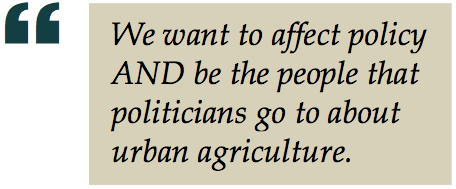
Participants also saw the value in simple questions that would capture nuance that statistics would miss: Do you think this initiative is making your community a better place? Is your quality of life better than a year ago? Do you expect it to improve in the next year?
Many of the initiatives were already using fairly standard and widely accepted quantifiable indicators to measure their programs:
- Numbers of volunteers / community participants engaged;
- Number of new members;
- Number of workshops, speaking events;
- Number of leaders; value of training
- In-kind hours (staff and volunteers);
- Social media mentions;
- $ from sales;
- Harvest volumes;
- $ raised
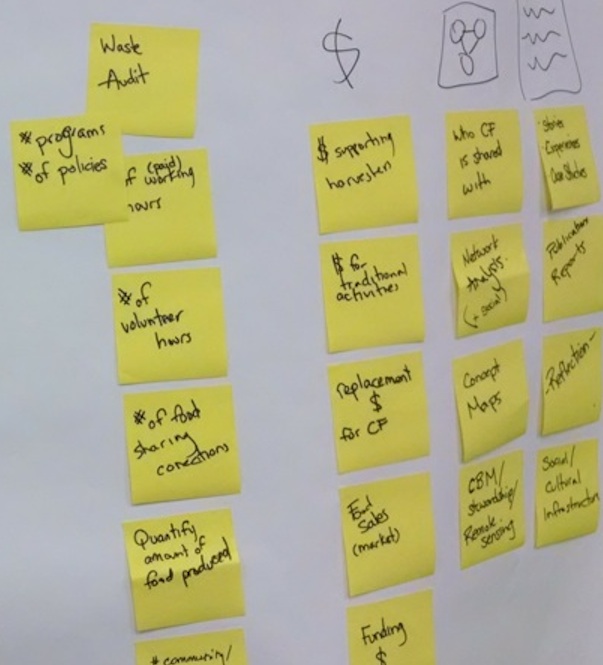
Measuring ‘Social Capital’ was seen as a greater challenge, and suggestions ranged from new quantifiable indicators, to new methods in need of another layer of precision:
- Unsolicited and unanticipated referrals/ references
- Relationships; social networking
- Number of new partnerships
- Referral calls by municipal staff
- Community connections fostered
- Stories of new projects catalyzed
- Connecting to other similar initiatives
- Social connectivity
- Network / social analysis, mapping
- Social capital mapping connections
- Skills transferred/ knowledge shared
- Social/ cultural infrastructure
- Increased community understanding/ cohesion
- Valuing relationships
- Quantify outreach
For a complete list of indicators and communication tools by region or initiative, as developed in the workshop ‘iceberg’ session, please see Appendix 1, Expressing Value from the Social and Informal Economy: Useful, Relevant Indicators and Complementary Communication Tools.
Recommendations and Next Steps
Participants agreed that next steps would include opportunities and resources for community projects to pilot-test some of the tools. Given the heavy reliance on volunteer labour, it was suggested that an important objective would be research into funding sources and requirements for core funding for these types of projects and initiatives, including student support for grant writing and collaboration between initiatives in collective applications.
Communications support was also seen as important, including:
- Op-eds
- 1-minute videos providing a digital story for each case study based on indicators
- Videos that combine projects to tell regional stories (e.g., regional efforts to reskill, preserve traditional knowledge, invest in value chains)
- Infographics
- Posters
- Profile stories
- Curriculum materials
- Policy proposals
- Network mapping
- Help for organizations to identify the “right” audiences
Facilitating connections between groups with similar interests and activities was also seen as a useful next step, as was public education (on the initiatives and their activities), youth outreach, and facilitating the transmission of traditional knowledge and indigenous perspectives.
Post-Workshop Evaluation
Seventeen workshop participants responded to the ‘Head, Heart, Hands and Feet’ evaluation which asked them to answer ‘What did I learn?’, ‘How did I feel?’, ‘What would I change about the workshop?’, and ‘What will I do?’.




Many identified the benefits to meeting in person, learning of the common ideas, understandings and challenges faced by their very diverse initiatives, including the shared frustration at identifying appropriate indicators to communicate their successes.
Many also identified the exposure to multiple new indicators as a positive result. Some thought that the indicators needed more work, while others judged that, because of the diversity of initiatives involved, the development of indicators would be best left to each initiative, to capture their unique features. At the same time, many pledged to use, test and/or think more deeply about putting them into practice.
Conclusion
Much as with the social and informal initiatives themselves, the value of the workshop had many layers not fully captured by the numbers of participants or evaluations completed. Much of the value was produced in the interactions—bringing together those who have worked with and/or researched diverse projects to reflect on, discover and develop different ways of valuing their outcomes. There are no magic bullets when it comes to indicators, but attention to process—to develop indicators that are relevant and useful to each community initiative—was identified as a strong starting point. Many of the indicators that were seen as broadly useful were also seen as difficult to communicate in standardized forms—in spreadsheets or written reports. Non-traditional forms of reporting, including video, infographics and digital mapping, were favoured by many as more engaging and expressive means of communicating the value produced by their projects. The project will move forward prioritizing the development of indicators of the value produced by social and informal community food initiatives, as well as complementary, useful and subversive methods of communicating that value.
Appendix 1
Expressing Value from the Social and Informal Economy: Useful, Relevant Indicators and Complementary Communication Tools
| Northwest Ontario o # of people (participation) o Specific project-based indicators that are developed in context o Multiplier effects o Long-term tracking of impact on people from experience o Generational impacto Feeling pictures o Open/ accessible platforms for knowledge sharing o Stories that describe impact o Film/ video/ audio |
Black Duck Wild Rice
o Wild rice beds restored / revitalized o Mapping social capital |
| Durham Integrated Growers
o Number of workshops; evaluations; connections made; learning
o Stories of new projects catalyzed through U-Grow Fund |
Hidden Harvest
o Value of barter |
| Atlantic Provinces Cluster
o Unsolicited and unanticipated referrals/ references
o Stories of transformation |
YK / NWT
Numbers Dollars People Knowledge |





